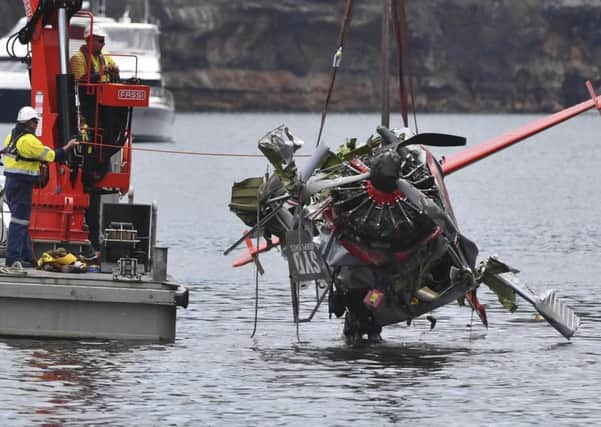Sydney seaplane was rebuilt after fatal crash 20 years ago


Wreckage of the De Havilland DHC-2 Beaver was lifted out of the Hawkesbury River by a crane barge on Thursday, five days after the New Year’s Eve tragedy.
Richard Cousins, the 58-year-old chief executive of FTSE 100 company Compass Group, died alongside his sons, Will and Edward, aged 25 and 23 respectively, his fiancee, Emma Bowden, 48, and her 11-year-old daughter Heather.
The pilot, Australian Gareth Morgan, 44, was also killed.
Advertisement
Hide AdAdvertisement
Hide AdThe aircraft, which was first registered in 1964, was used as a crop duster in Australia prior to its life as a seaplane.
On November 15 1996, it was involved in a crash in Kotupna, New South Wales, in which the pilot was killed.
Under “damage to aircraft” the investigators said it was “destroyed”, and had been carrying a full load of fuel and was beginning to dump a tonne of superphosphate before it crashed.
The report into the incident states that the aircraft had “completed periodic maintenance two days prior to the accident”.
Advertisement
Hide AdAdvertisement
Hide AdNat Nagy, executive director of the Australian Transport Safety Bureau, was asked about the reports during a press conference on Thursday.
“I am aware of a previous incident with this aircraft,” he said. “There were a number of factors involved in that incident and that will be something we look at.
“It’s a matter of course and routine in any investigation to look at ... the individual aircraft history and any other incidents that may be relevant.”
The aircraft, owned by Sydney Seaplanes, apparently nose-dived into the Hawkesbury River, 25 miles (40km) north of Sydney.
Advertisement
Hide AdAdvertisement
Hide AdDetective Superintendent Mark Hutchings, of New South Wales Marine Area Command, said it appeared there had been “quite an impact on hitting the water”.
The plane was rebuilt following the incident in New South Wales more than two decades ago, and expert Julian Bray said this is not unusual.
“You have only got to look at any heritage aircraft collection and a lot of those, the spitfires for example that are flying today, a lot of those crashed during or after the war,” he said.
“Really it is a pile of components and you can actually reuse those - obviously they go through tests and everything else - but it is not uncommon.”